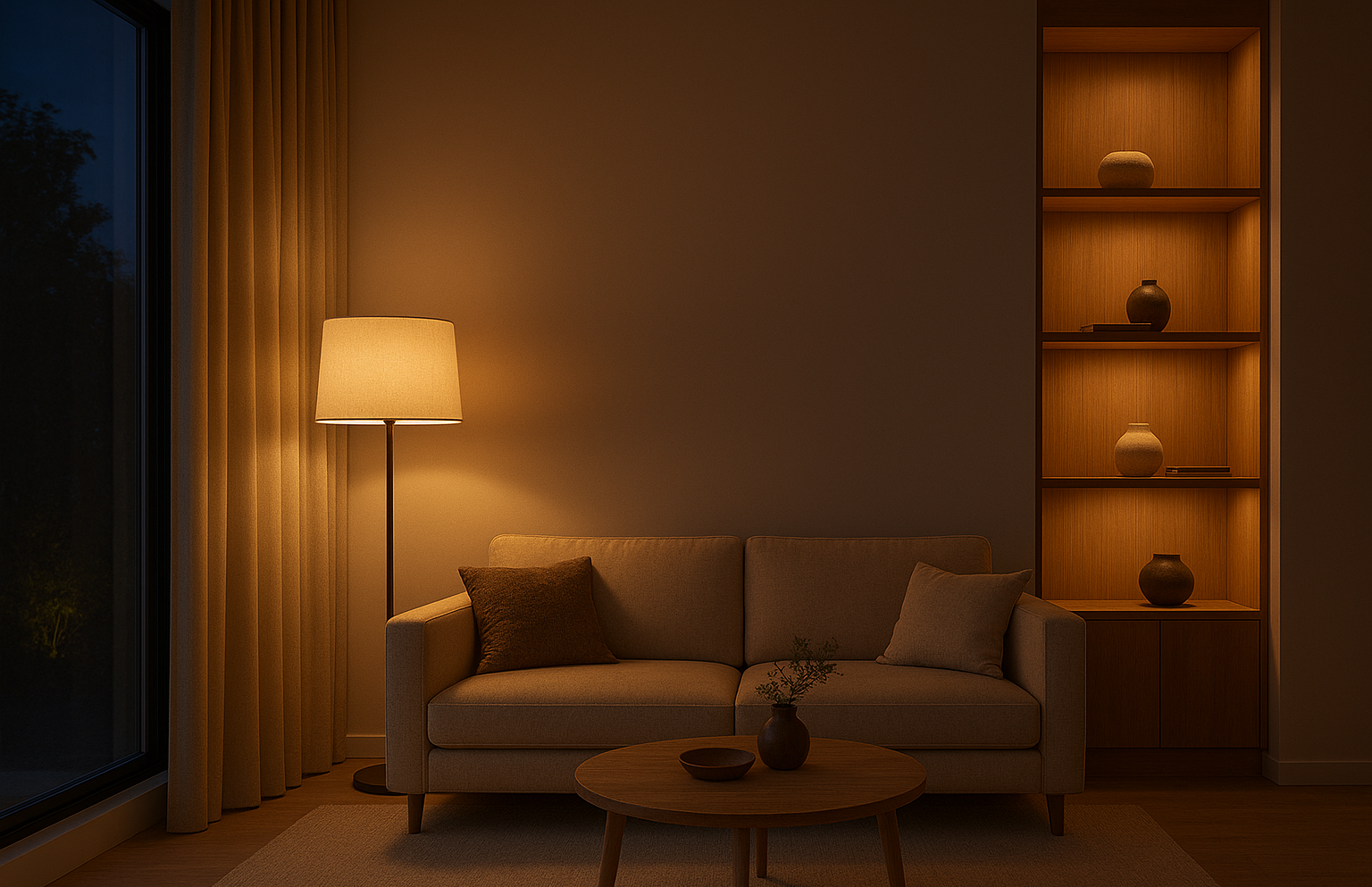
The Power of Light: Why Lighting is Essential in Interior Design
When it comes to designing your home, lighting is one of the most powerful yet often overlooked elements. The right lighting doesn’t just make a room brighter—it transforms its look, feel, and functionality. It can highlight textures, enhance colors, create ambiance, and even influence mood.
At Czar Interiors, we believe that lighting is more than a necessity it’s a design tool that can elevate every space in your home. In this blog, we’ll explore why lighting is so important in interior design and share expert tips to help you choose the perfect lighting for every room.
Lighting Sets the Ambiance and Mood
The mood of a room depends heavily on its lighting. Bright, cool lighting feels energizing and fresh, making it perfect for kitchens, bathrooms, and home offices. In contrast, warm, soft lighting creates a cozy, intimate atmosphere, ideal for bedrooms and living areas.
By adjusting light temperature and brightness, you can instantly change the vibe of any space, making it more inviting or more energizing depending on the need.
Lighting Highlights Architectural Features
Strategically placed lighting can draw attention to unique details such as statement furniture, textured walls, or artwork. Accent lighting like spotlights, track lights, and wall sconces can turn these elements into focal points, adding depth and personality to your home.
Lighting Enhances Colors and Textures
The right lighting can make colors richer and textures more defined. It allows wall paints, furniture finishes, and fabrics to appear vibrant and true to tone. Conversely, poor or dim lighting can flatten surfaces and make colors look dull. If you’ve invested in premium finishes or décor, the right illumination ensures they stand out beautifully.
Lighting Improves Functionality
From reading in the bedroom to cooking in the kitchen, proper lighting ensures tasks are done efficiently and safely. Task lighting makes work easier and prevents eye strain, while ambient lighting ensures overall visibility and comfort. Each space requires the right balance of illumination for maximum usability.
The Three Types of Lighting in Interior Design
Professional designers use a layered lighting approach, combining three key types:
Ambient Lighting: The main source of illumination, often provided by ceiling fixtures, chandeliers, or recessed lights.
Task Lighting: Focused lighting for specific activities, such as reading lamps, under-cabinet lights, or desk lamps.
Accent Lighting: Decorative lighting that adds visual interest and highlights certain areas or objects, such as spotlights or wall sconces.
Best Lighting Choices for Each Room
Living Room: Combine ambient and accent lighting. Use chandeliers or ceiling lights for general illumination, and add floor lamps, table lamps, or wall sconces for softer, layered light.
Kitchen: Choose bright task lighting for food preparation. Combine overhead lighting with under-cabinet lighting for countertops, and use pendant lights above islands for both style and functionality.
Bedroom: Opt for soft, warm lighting to create a restful atmosphere. Install wall-mounted sconces or dimmable ceiling lights for general lighting, and place bedside lamps for reading. Avoid harsh, cool-toned lights that disrupt relaxation.
Bathroom: Go for clear, shadow-free task lighting around the mirror. Install lights on both sides of the mirror to minimize shadows, and add ceiling lights for ambient illumination.
Dining Room: Make a statement with a chandelier or pendant light above the table. Use dimmers to adjust brightness for different moods or occasions.
Home Office: Select cool, bright lighting to boost focus and productivity. Combine task lighting, such as desk lamps, with general ambient lighting to avoid glare and eye strain.
Expert Tips for Perfect Lighting
Layer your lighting by mixing ambient, task, and accent lighting for a balanced look.
Choose the right bulbs: Cool white (3500–5000K) for work areas and warm white (2700–3000K) for cozy spaces.
Use dimmers to quickly adjust the mood of a space.
Maximize natural light by using mirrors and light-colored interiors to reflect daylight.
Conclusion
Lighting isn’t just functional it’s a creative design element that shapes how your home looks and feels. By understanding how to balance different lighting types, you can create a home that is welcoming, stylish, and practical day or night.
At Czar Interiors, we help you craft lighting designs that enhance every corner of your space. From cozy living rooms to productive home offices, our experts ensure your home is beautifully lit, inside and out.